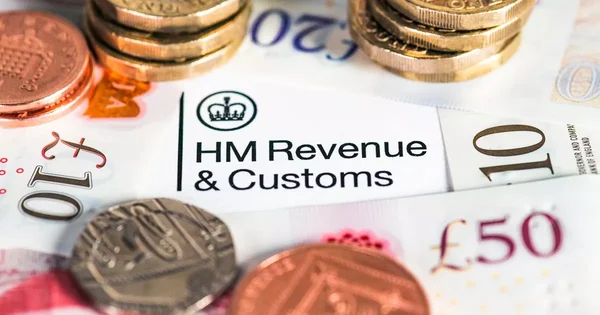Let’s Break This Down Together...
Struggling to figure out whether to claim mileage or actual car costs on your tax return? It can be confusing knowing which route really saves you more.
This article walks you through both options in plain English. We’ll cover how mileage allowance works, how actual costs are calculated, and who each method suits best.
By the end, you’ll know which approach could cut down your tax bill and paperwork. Let’s dive in.
What Are Your Car Expense Claim Options?
When it comes to claiming vehicle costs, you have two main choices. The first is the simplified mileage allowance, also known as the simplified method, which gives you a fixed rate per business mile.
The second is the actual costs method, where you claim a percentage of all your business expense related to the vehicle. Both require different record-keeping approaches.
These options are available to sole traders, partners and limited company directors. Employees can also claim mileage allowance relief if their employers underpay them.
Not all journeys or expenses qualify for these methods, so it's important to check HMRC rules to see what qualifies. And you should be advised that If you choose simplified mileage for a vehicle, HMRC requires you to stick with it for that vehicle until you replace it, you can’t switch back to actual costs halfway through.
Mileage vs Actual Costs: Which Saves More Tax?
The mileage allowance gives you a flat rate of 45p per mile for the first 10,000 miles of business travel in a tax year. After that threshold, the rate drops to 25p per mile.
For motorcycles, the rate is simpler at 24p per mile with no upper limit. These rates are designed to cover all running costs and includes fuel, maintenance, and depreciation.
The actual costs method lets you claim a percentage of all your vehicle expenses based on your business use. You calculate the business percentage based on the distance driven for business purposes. If 60% of your mileage is for business, you can claim 60% of all costs.
These costs include fuel, insurance, repairs, servicing, and road tax. The total cost of operating the vehicle is considered. You can also claim capital allowances on the vehicle itself, which can be substantial.
These expenses provide a deduction, reducing your taxable income and resulting in tax savings.
High-mileage drivers using their own cars for business often benefit more from the mileage allowance. If you drive 10,000 business miles, that’s £4,500 you can claim without needing receipts.
Expensive vehicles with higher running costs but fewer business miles typically favour the actual costs approach. Using a car for business, such as that £50,000 electric SUV with its pricey insurance, might give you a better tax break this way.

Flat Rates and Simplified Expenses
When it comes to claiming vehicle expenses, many sole traders, limited companies, and self-employed professionals find the simplified expenses method, also known as the flat rate method, an attractive option. Instead of tracking every individual cost, you simply claim a fixed amount per business mile driven.
The flat rate expenses method is particularly popular because it cuts down on paperwork. Rather than collecting every fuel receipt, insurance invoice, or repair bill, you just need to keep a detailed mileage log.
To claim simplified expenses, you must keep accurate records of your business mileage. This means noting the date, start and end points, total miles, and the business purpose of each journey. Good record keeping is essential, as HMRC may request to see your mileage log to support your claim.
While the flat rate method is convenient, it may not always reflect your actual costs, especially if your vehicle has high maintenance or insurance expenses. In such cases, the actual costs method, where you claim a proportion of all expenses related to business use, might result in greater tax relief.
Don’t forget, you can also claim additional expenses related to business travel, such as parking fees and tolls, on top of your mileage allowance. These extra claims can further reduce your tax bill. If you’re unsure which method to use, or how to keep the right records, it’s wise to consult an accountant or tax advisor for a free consultation tailored to your situation.
Record-Keeping Requirements
Whichever method you choose, good records are essential. HMRC can request evidence during an enquiry, so preparation matters. Using accounting software can help keep your records organized and compliant with tax regulations.
For mileage claims, you’ll need to log dates, destinations, reasons for travel, and distances for each business trip. No need to keep fuel receipts, though many find them useful for personal tracking.
The actual costs method requires all receipts and invoices, plus your mileage records, to calculate the business percentage. You’ll also need to track capital allowances for the vehicle itself.
HMRC can ask to see your records going back at least 6 years. Making a note of each journey and expense as you go and keeping everything organised from the start will save you significant stress later.
Special Considerations for Limited Companies
If you run a limited company, there are extra factors to consider. The tax implications differ from those for sole traders.
Company cars come with Benefit in Kind tax implications for directors and employees. The tax charge depends on the car’s value, CO2 emissions, and list price.
Electric vehicles offer significant tax advantages, with much lower benefit rates. This makes them increasingly attractive for company car schemes.
If your company is vat registered, you may be able to reclaim VAT on certain vehicle expenses, such as fuel and maintenance, provided they are for business use.
Once you’ve chosen a method for a particular vehicle in a limited company, you generally need to stick with it. This makes your initial decision more important.
The company can still pay the approved mileage rate for business journeys in an employee’s personal vehicle, as well as cover services, fuel, and maintenance as deductible expenses. This creates no taxable benefit for the employee.

Final Thoughts
The best approach depends on your specific circumstances, vehicle type and business usage pattern. There's no one-size-fits-all answer.
Do the maths for both methods in your first year before committing. This initial analysis can save you significant tax over the vehicle's lifetime.
Many find that high business mileage in an economical car favours the mileage allowance. Expensive vehicles with higher running costs but fewer business miles benefit from the actual costs method.
Electric vehicles add another layer to consider, with their lower running costs but higher purchase prices. The tax advantages for these are changing rapidly as government policy evolves.
Simplifying Mileage vs Actual Car Costs Tax
Tracking business mileage shouldn't give you a headache at tax time. Pie, the UK's first personal tax app, makes it simple with automated journey logging.
Our mileage tracker captures your journeys in real-time, calculating your allowable expense using current HMRC rates. The app clearly separates business and personal use for easy reporting.
When tax season arrives, your mileage claim is already calculated and ready to submit directly to HMRC. You can even compare mileage allowance versus actual costs within the app.
Fancy seeing how it works? Have a quick look at the Pie app today and take the stress out of your vehicle expense claims.











